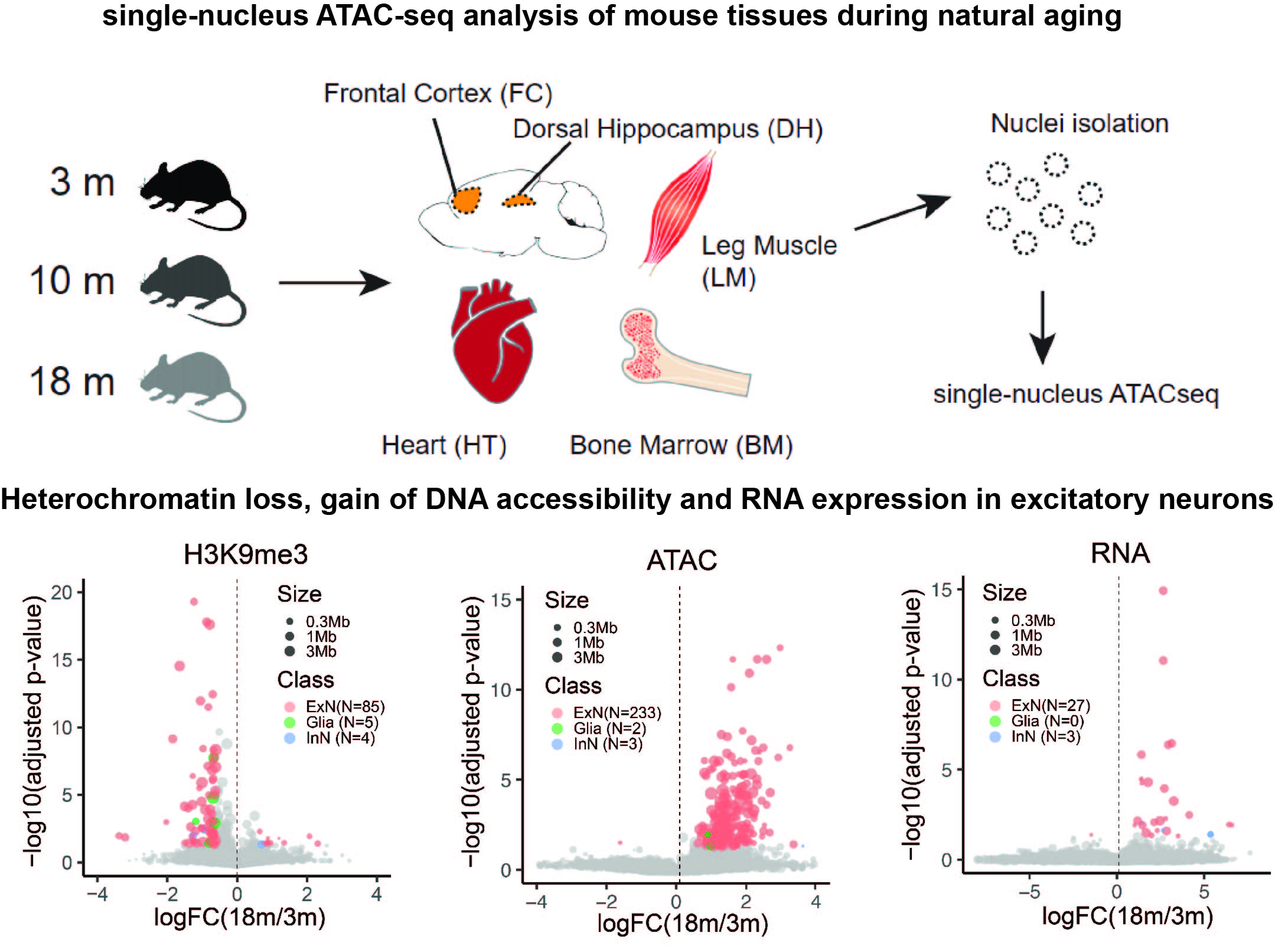
Congratulations
Yanxiao and Luisa's mouse single-cell aging paper published on Cell Research today!
Abstract: Loss of heterochromatin has been implicated as a cause of pre-mature aging and age-associated decline in organ functions in mammals; however, the specific cell types and gene loci affected by this type of epigenetic change have remained unclear. To address this knowledge gap, we probed chromatin accessibility at single-cell resolution in the brains, hearts, skeletal muscles, and bone marrows from young, middle-aged, and old mice, and assessed age-associated changes at 353,126 candidate cis-regulatory elements (cCREs) across 32 major cell types. Unexpectedly, we detected increased chromatin accessibility within specific heterochromatin domains in old mouse excitatory neurons. The gain of chromatin accessibility at these genomic loci was accompanied by the cell-type-specific loss of heterochromatin and activation of LINE1 elements. Immunostaining further confirmed the loss of the heterochromatin mark H3K9me3 in the excitatory neurons but not in inhibitory neurons or glial cells. Our results reveal the cell-type-specific changes in chromatin landscapes in old mice and shed light on the scope of heterochromatin loss in mammalian aging.
Full text can be accessed from the following link
